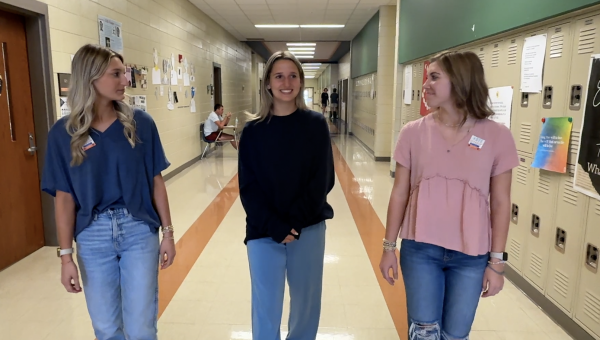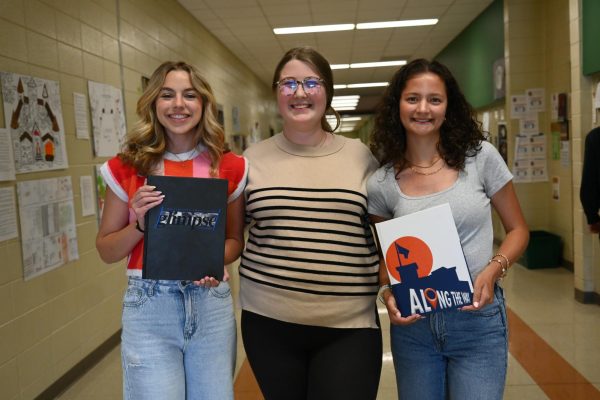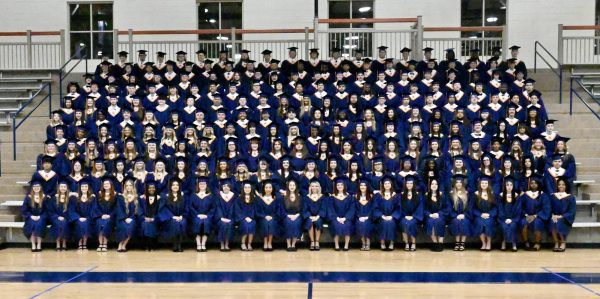Winter weather and COVID-19 cause slow start to second semester
It’s no secret that this semester has been off to a rollercoaster of a start.
Thanks to teacher workdays, extremely high numbers of quarantines and unpredictable winter weather, students and faculty in District 1 have only had one full week of in-person school in 2022.
They have also had over a week of elearning, which brought about its own unique challenges.
Junior Ellie Mitchell was quarantined a couple of days before the start of elearning, and she says that the hardest part of the experience for her was keeping up with the daily assignments.
“The hardest part of elearning for me was time management,” Mitchell said. “When I’m at school, I get my work done during class, but when I’m at home, I put it off until the last minute.”
Junior Tamyra Zimmerman was also quarantined before the rest of her classmates went virtual, and in her opinion, the most difficult part of elearning was seeing the list of assignments pile up as she battled COVID-19.
“It was very hard because all I wanted to do was sleep,” Zimmerman said. “It was hard to check Google Classroom and keep up with my work while I was running a 103-degree fever. I had a to-do list with 44 assignments on there.”
From the teachers’ end, elearning meant trying to figure out if they should use the time for review, or press forward with new content.
For math teacher Carrie Forrest, it was full steam ahead for her AP Calculus and AP Statistics classes, while her precalculus honors class got to slow down and have a little more review time.
“My AP classes had to continue moving,” Forrest said. “We’re on a tight schedule, so (we have to) make sure that all of our content is taught by that set date that College Board gives us.”
Science teacher Chelsea Elkins chose to use the time to review as well. She acknowledged that using the time as review time created its own obstacles that depended on whether or not students actually completed their virtual assignments.
“The week of virtual learning definitely delayed some things because elearning is not an ideal environment,” Elkins said. “It’s still valuable for students to get lots of practice, but then you still end up with disparities in your classroom as far as how many students do the work and how many students don’t do their elearning work, so that when you come back, you have to spend at least one day regrouping and getting everybody on the same page.”
Both Forrest and Elkins are hopeful that the week of elearning is the only week of elearning that District 1 will have this semester, but they did agree the week away from the building was necessary. The wintry weather forced people to remain at home and away from others.
“The snow days kind of helped us with illness to kind of ‘slow the spread’ as they say, so I hope (we don’t have to go back on elearning),” Forrest said.
“I think at this point, everyone has either had it, or they’re gonna be asymptomatic, or they’re vaccinated, and their vaccine is gonna cover their immunity,” Elkins said. “I think at this point, the couple days we had and then the snow kind of compounded to make it so that we didn’t have to.”
Even though elearning certainly has its benefits, both teachers and students said that they missed in-person learning. Mitchell specifically missed the daily interaction and collaboration with her peers.
“I missed being able to see my friends, and I missed collaborating with my classmates on classwork,” Mitchell said.
Ironically enough, on elearning days, students tend to miss the teachers the most, while the teachers tend to miss the students the most. Zimmerman especially missed in-person teaching for all of her AP classes.
“I can’t really teach myself virtually, especially since all my classes are AP right now,” Zimmerman said. “It’s very hard to learn AP Biology by myself.”
According to Forrest, being able to interact with her students in the classroom is what makes in-person learning so special. While tools such as Google Meet and Zoom are helpful, neither of those compare to the actual classroom setting.
“I think just the interactions with the students, that face-to-face interaction,” Forrest said. “Google Meet is not the same thing because everybody’s either sitting in their bedrooms or at the kitchen table, so (I miss) having everybody in a room together.”
Elkins says that she also missed the class interactions, but specifically the ability of students to ask questions. She also missed getting to see the “lightbulb” go off when a student understands a new concept.
“I missed students getting to ask questions because it’s really hard as a teacher when someone emails you questions, and you try to explain it the best you can, but when you’re explaining something via email, it just doesn’t always 100% correlate,” Elkins said. “I missed that constant interaction of the face-to-face so you can have that lightbulb moment and realize ‘Oh, it was super simple, I just figured it out.’”
Your donation will support the student journalists of Chapman High School. Your contribution will allow us to purchase equipment and cover our annual website hosting costs.





